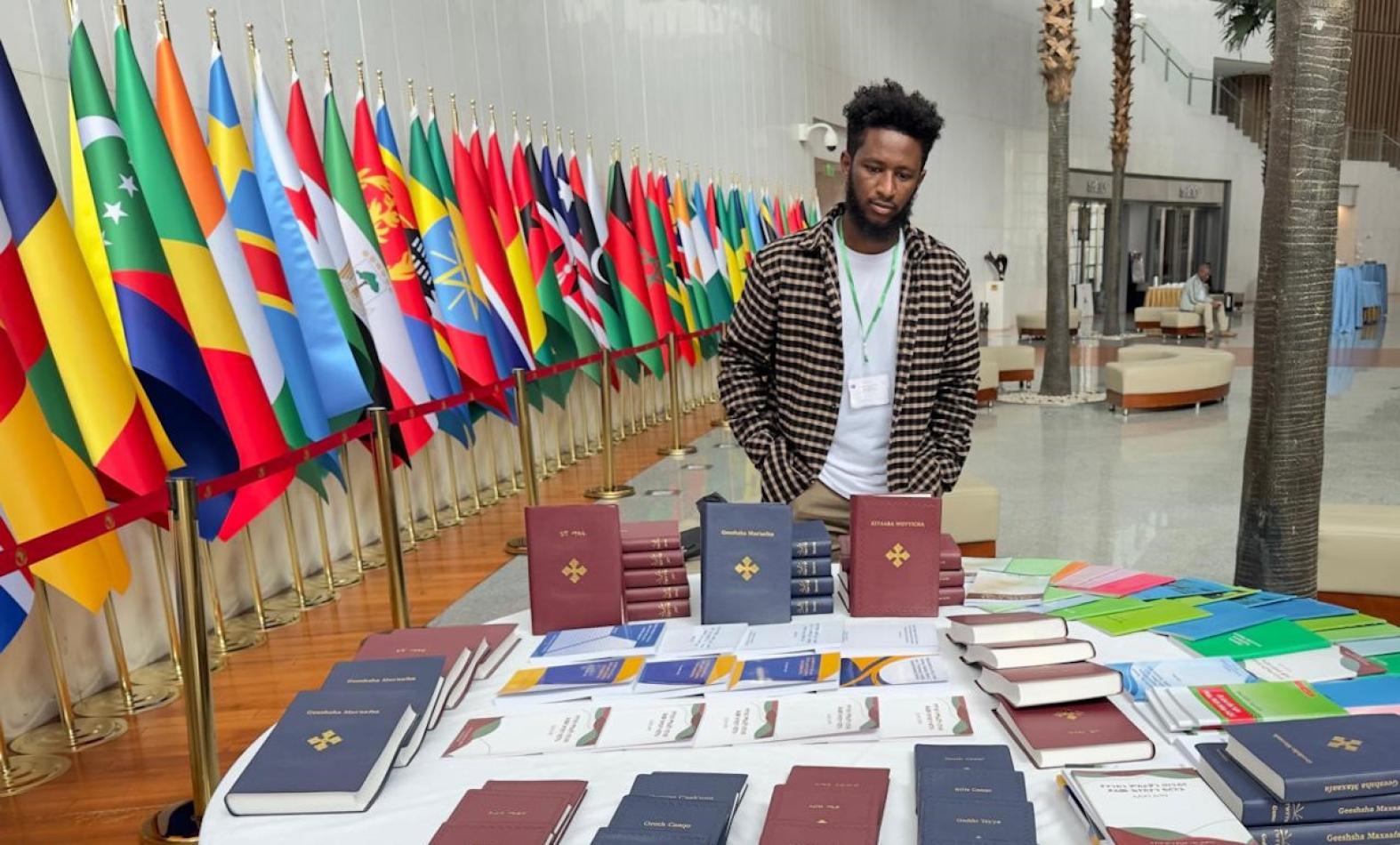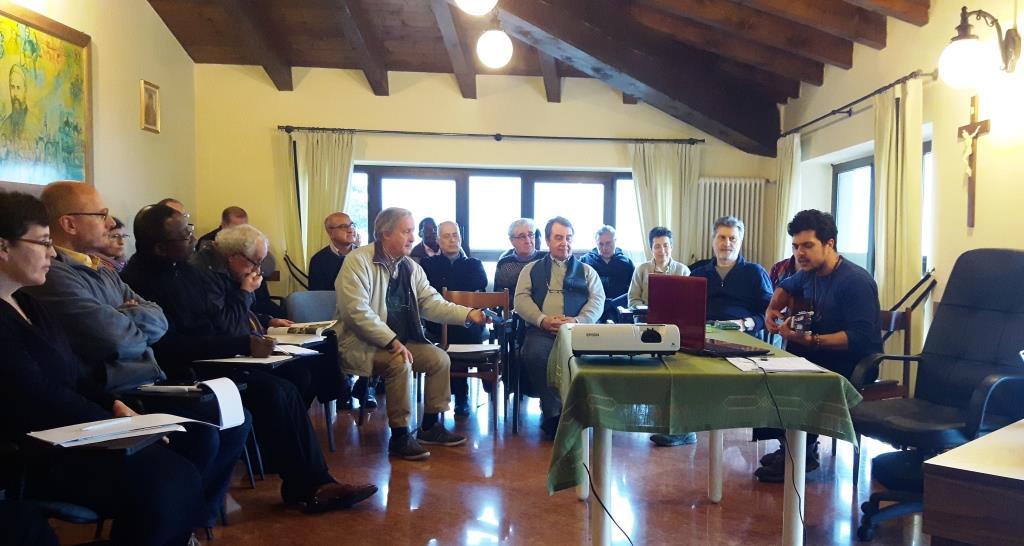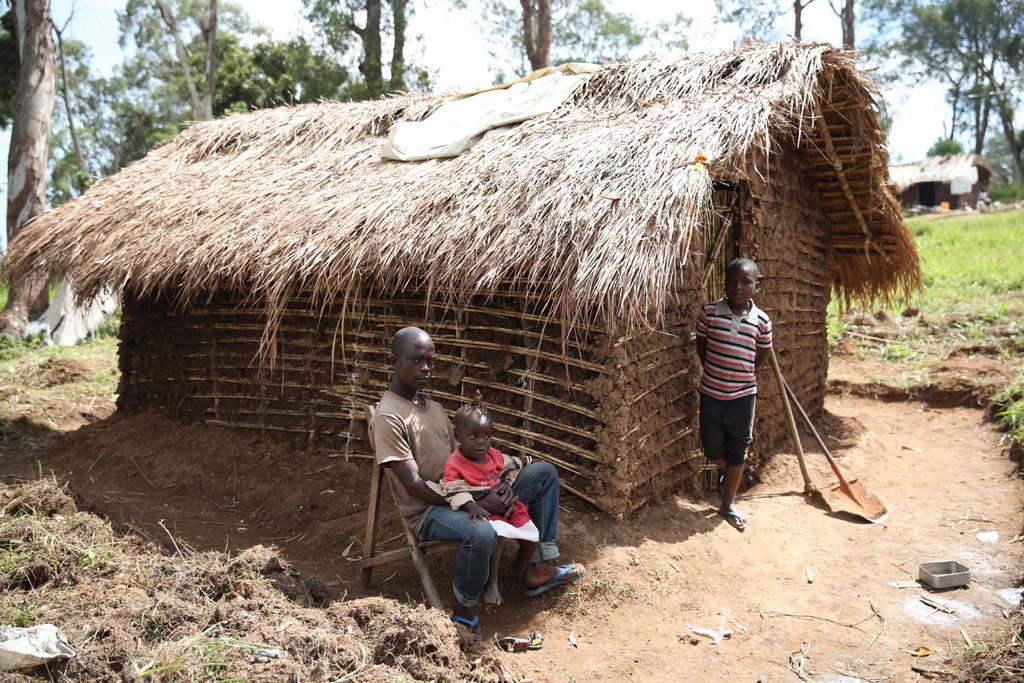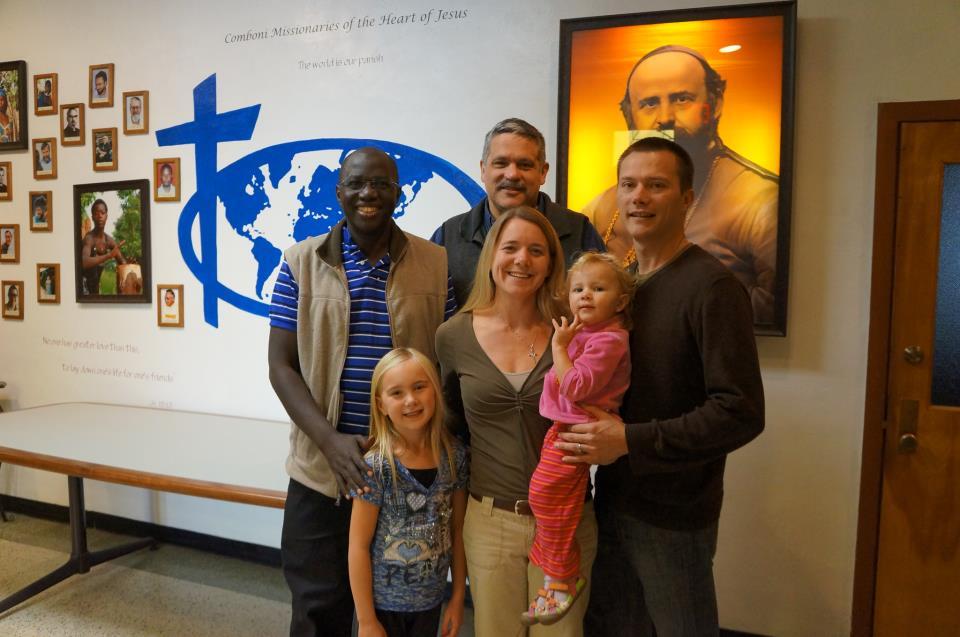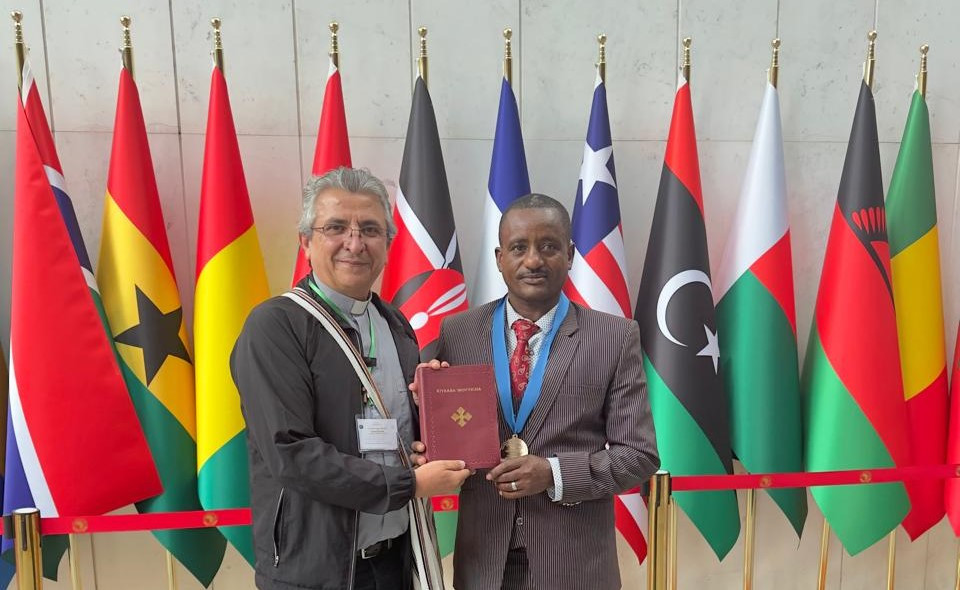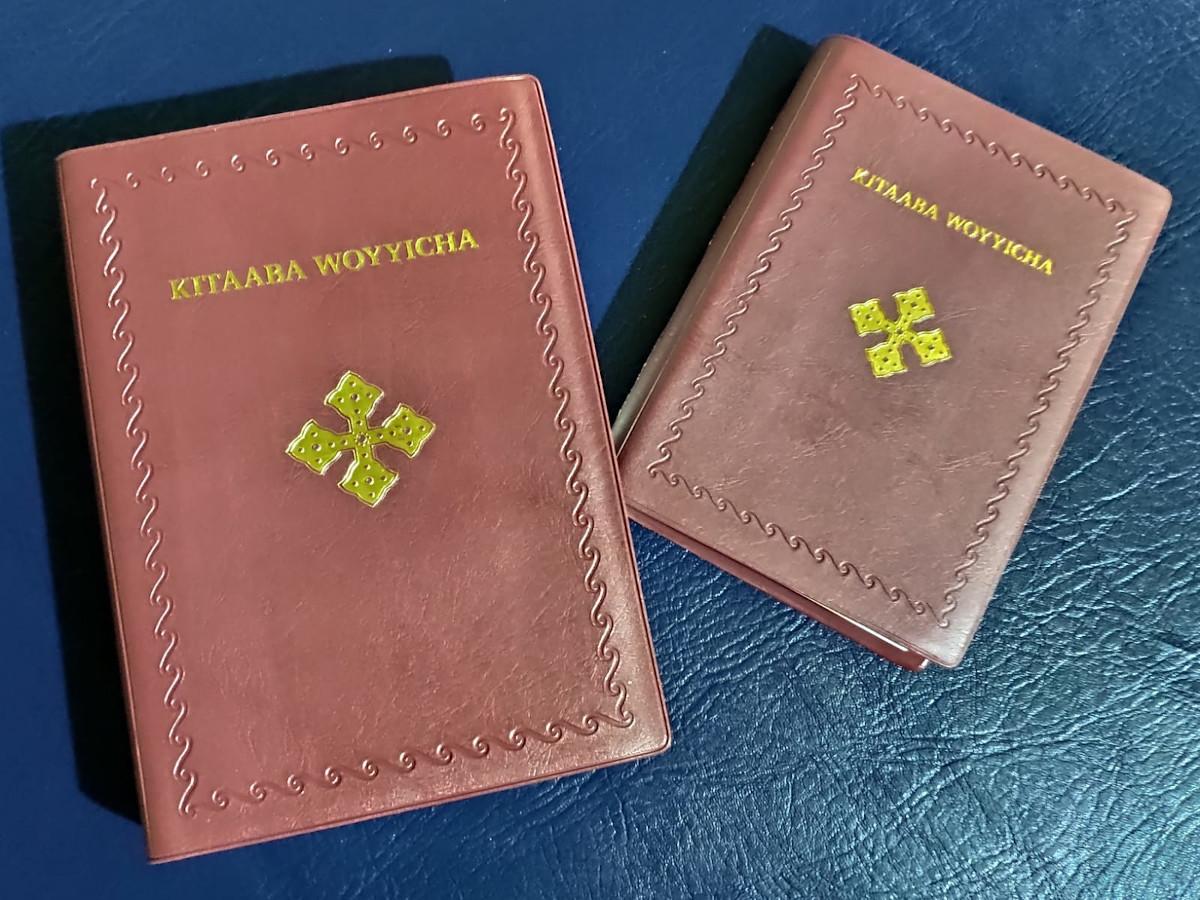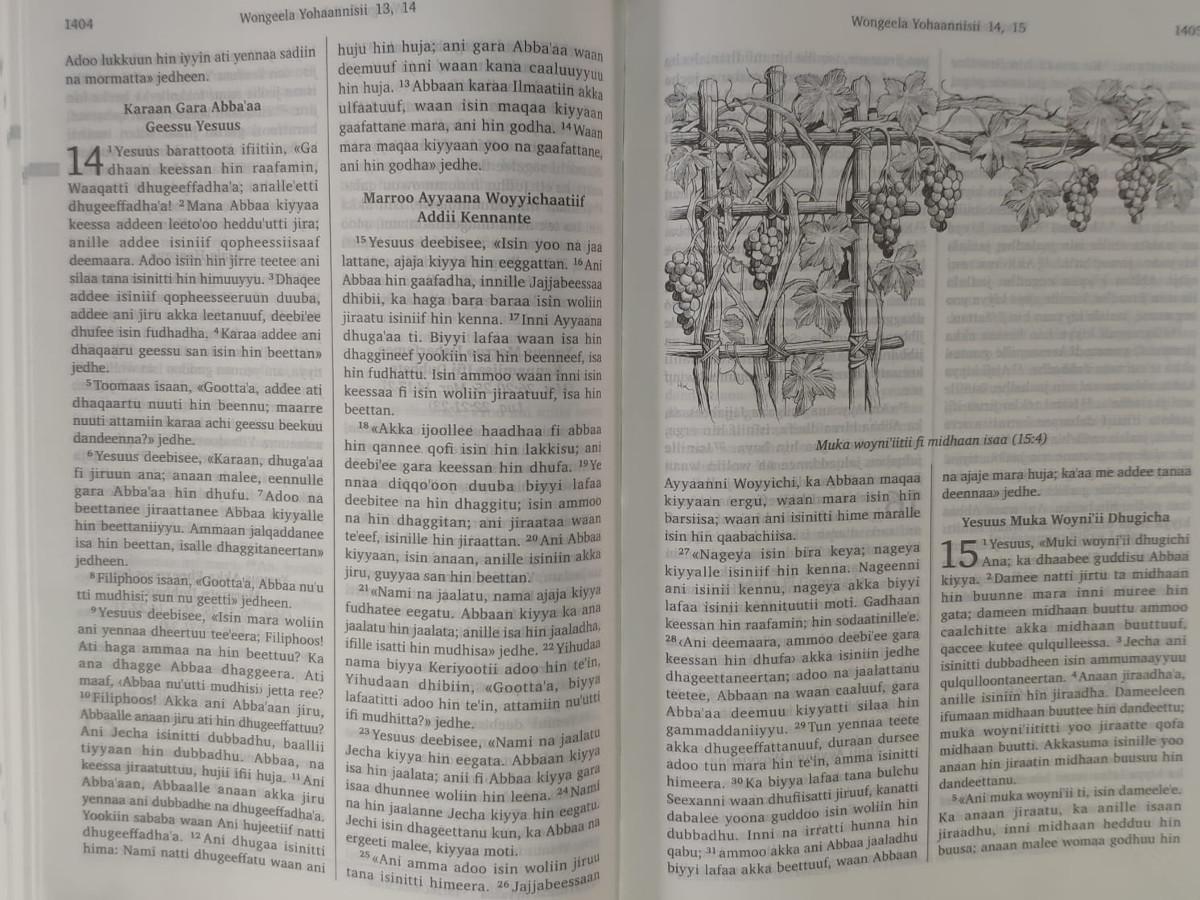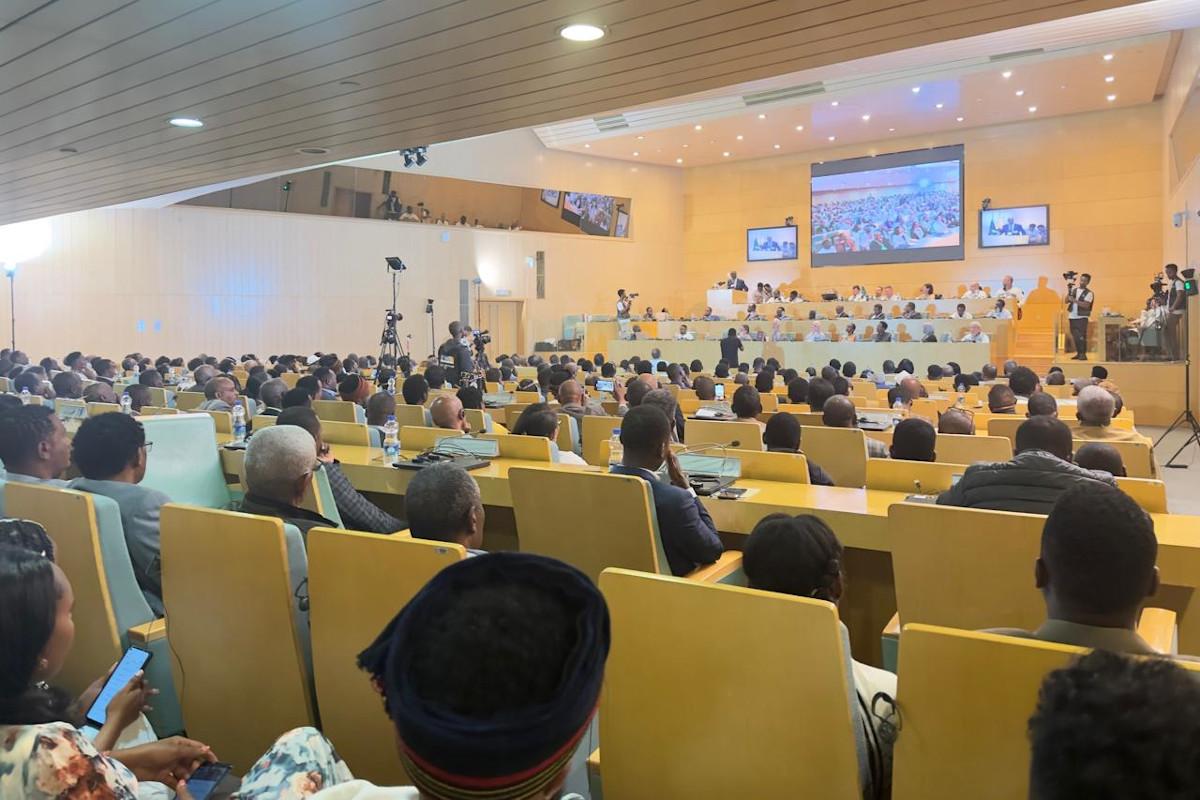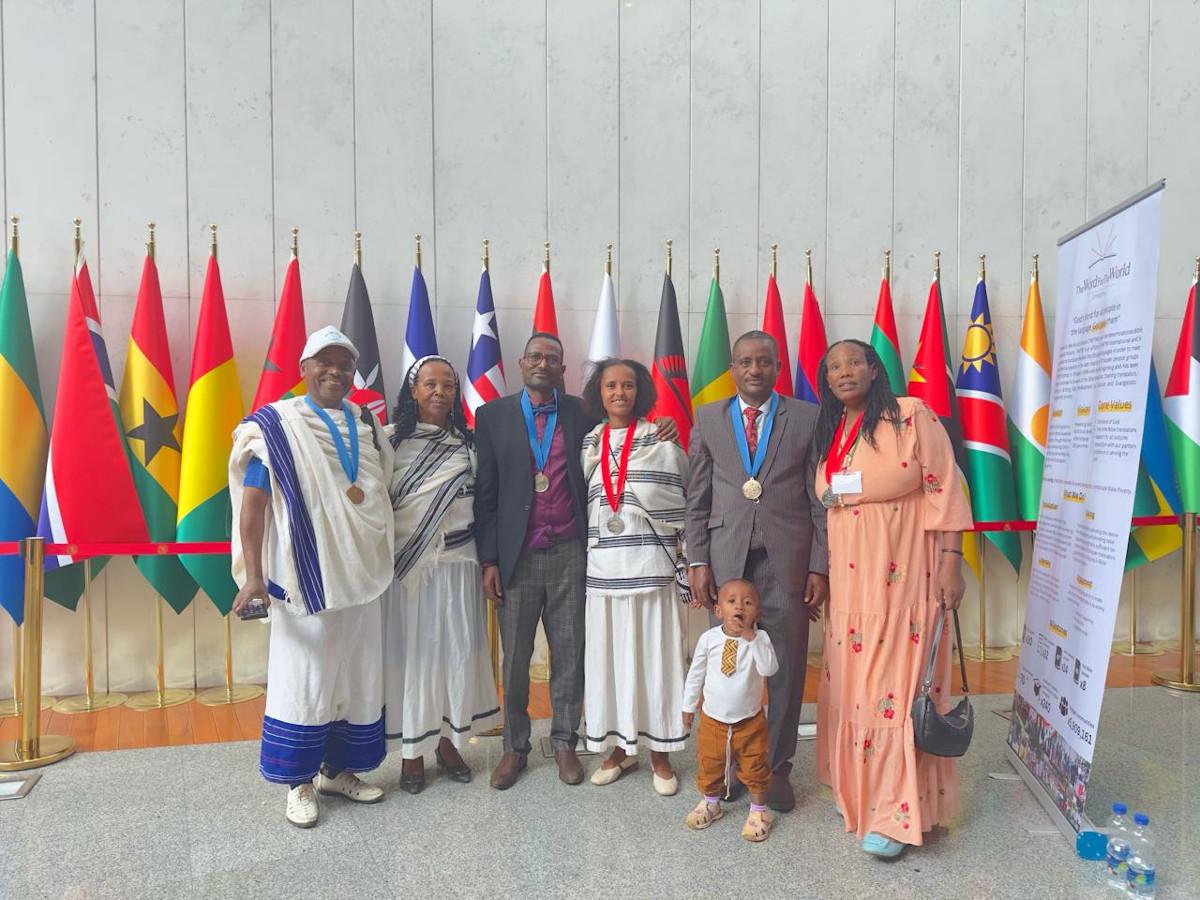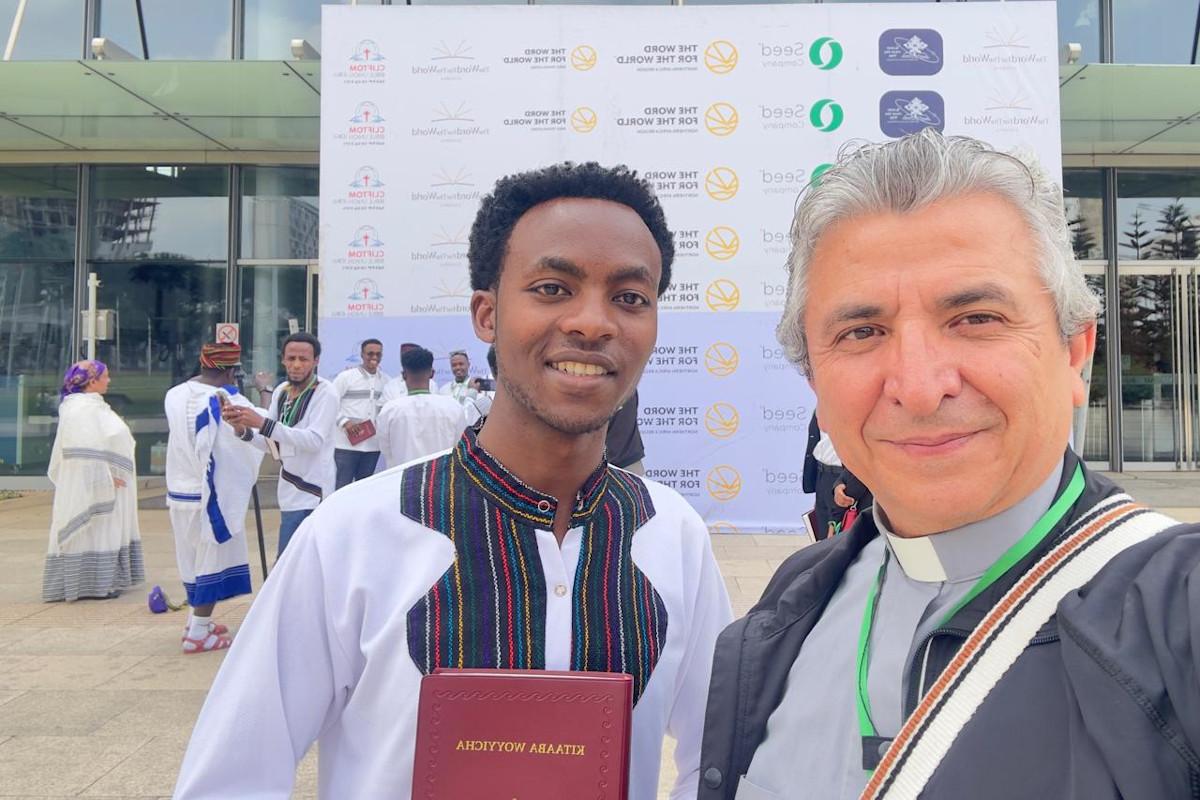Daniel Comboni
Comboni Missionaries
Institutional area
Other links
Newsletter
Saturday, June 15, 2024
Kitaaba Woyyicha, the Holy Bible in Guji language, was presented to the public in a well-attended ceremony in Addis Ababa, Ethiopia’s capital, on May 12, 2024. The ecumenical translation of the whole Bible to Guji started in the year 2000 and took more than two decades to complete. The New Testament in Guji was published in 2007, 17 years ago.
The translators’ main team was made up by members from the Catholic, Lutheran, Light of Life and Word of Life Churches. Many other Churches also participated in the project with technical and financial support.
Comboni Missionary Fr Pedro Pablo Hernández, an evangelizer among the Guji in Galcha, Haro Wato and Qillenso-Adola during over two decades, read a message from the Apostolic Administrator of Hawassa, Fr Juan Núñez, MCCJ, at the presentation ceremony. “From now on, Guji people will be able to read the Word of God in their mother tongue. That makes it more familiar and closer to them, more intimate and dearer to the believers”, Fr Núñez wrote. He also underlined the ecumenical character of the translation, “fruit of collaboration between different Christian denominations”, thanking the Lord and all those who made possible the Bible’s publication in Guji language.
Tsegaye Hailemichael Barisso, the Catholic translator from Galcha Mission, explained that the team used four main sources in its work: Good News Bible (in English), the old and new Amharic translations and the Oromo Bible (from Wollega Oromo, from Western Ethiopia). They also used the New Jerome Biblical Commentary. The team of translators was assisted by a number of international consultants that prepared them for the job.
“The translation was not an easy journey. I started almost as a boy and now I am a gown up man. It was boring at the beginning. You need to find the exact common word. At times it was painful when the budget was not enough. But when I saw how people welcomed the Guji Holy Bible, I felt a very big joy and all wounds were healed”, Tsegaye said.
He also underlined the joy for the ecumenical experience. He explained that the Bible Society of Ethiopia planned to print 50 thousand copies. However, many churches got together and, together with the assistance of some donors, it was possible to print 200 thousand copies in two formats.
Kitaaba Woyyicha is a joint edition from The World for the Word-Ethiopia and the Bible Society of Ethiopia. The translation follows the Protestant Canon. The Bible is illustrated with a number of drawings that explain some biblical passages or concepts. It has 1650 pages. The biblical maps are in full colour. The Bible has a five-page glossary explaining some words and their meanings.
The Guji people are part of the Oromo family. They are over two million, divided into three main groups. They live in the mountains and lower lands of Southern Ethiopia. In the past they were pastoralists. Now they also tend their fields.
The Comboni Missionaries started working in Guji land in 1976, assisting occasionally some Sidama Catholics from Teticha who migrated to Qillenso and Gosa. When the Sidama were expelled, the missionaries opened a mission in Qillenso and started evangelizing the Guji in 1981. From Qillenso they went to Soddu Abala (1984), Haro Wato (1995) and Adola (2016). The Jesuits, together with the FMM sisters, opened a mission in Gosa in 1985. Now it is an outstation of Qillenso.
Text: Fr José Vieira, MCCJ
Photos: Fr Pedro Pablo Hernández, MCCJ

